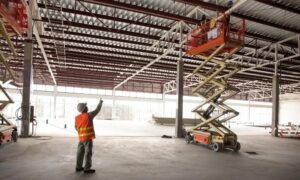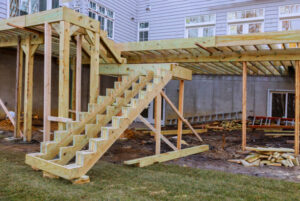Construction estimates are essential for any project, big or small. They determine budgets, timelines, and resource allocation. However, market fluctuations can significantly impact these estimates, causing delays or budget overruns.
Let’s explore how market changes influence construction estimates and how to address these challenges effectively.
What Are Market Fluctuations?
Market fluctuations refer to the rise and fall in prices of goods, materials, and services. These changes are caused by supply-demand imbalances, economic trends, natural disasters, or global events. In the construction industry, they directly affect material costs, labor charges, and equipment expenses.
Effects of Market Changes on Construction Costs
1. Material Price Volatility
Material costs often fluctuate due to changes in global markets. For example, steel and lumber prices can spike because of supply chain disruptions or high demand. These fluctuations increase project costs unexpectedly, affecting construction cost estimating accuracy.
2. Labor Availability and Wages
Labor shortages or surpluses impact wage rates. In booming economies, wages rise due to high demand for skilled workers. This can significantly increase residential construction estimating costs. Conversely, a downturn might lower wages but could lead to project delays due to fewer skilled workers.
3. Currency Exchange Rates
For projects relying on imported materials, currency exchange rate changes can impact costs. A weaker local currency means higher import costs, which can disrupt commercial construction estimation efforts.
4. Energy and Fuel Prices
Construction heavily depends on energy for machinery and transportation. Fluctuating fuel prices can alter the overall project budget, especially in large-scale projects requiring significant equipment usage.
Challenges in Accurate Estimation During Fluctuations
Market instability makes it harder to provide precise estimates. Here are key challenges faced by estimators:
Unpredictable Material Costs: Sudden changes can make previous estimates irrelevant. For instance, spikes in lumber estimating affect framing or structural costs.
Project Delays: When prices rise mid-project, contractors may pause work to renegotiate budgets.
Over or Underestimating: Overestimating makes bids less competitive, while underestimating leads to losses.
Mitigating the Impact of Market Fluctuations
Although market fluctuations are inevitable, strategic steps can minimize their impact on construction estimates.
1. Monitor Market Trends
Keep a close watch on material and labor market trends. Use historical data and current forecasts to refine your estimates.
2. Use Advanced Tools
Invest in modern construction cost estimating software. Tools like these adjust estimates based on real-time price data, helping contractors stay competitive.
3. Build Contingency Budgets
Always include contingency funds in your budget. A safety net of 10-15% can cover unforeseen price changes.
4. Lock in Prices Early
Negotiate contracts with suppliers to lock in prices for materials and labor. This approach secures your project against unexpected increases.
Role of Technology in Managing Fluctuations
Technological advancements offer solutions for handling volatile markets. Here’s how technology supports better estimates:
Real-Time Updates: Modern estimating tools provide up-to-date pricing for materials and labor.
Scenario Planning: Software helps simulate different market conditions, allowing contractors to prepare for worst-case scenarios.
Detailed Analysis: Tools like drywall estimating software simplify complex calculations, making estimates more accurate.
Long-Term Strategies to Tackle Market Instability
1. Diversify Suppliers
Relying on a single supplier increases vulnerability. Work with multiple vendors to avoid disruptions in material supply.
2. Strengthen Contracts
Include clauses that address price escalations. This ensures a fair distribution of financial risks between contractors and clients.
3. Train Estimators
Equip your team with skills to adapt to market fluctuations. Well-trained estimators can adjust budgets efficiently and maintain project timelines.
Final Thoughts
Market fluctuations are an ongoing challenge for construction professionals. These changes influence material prices, labor costs, and project timelines. To overcome these challenges, contractors must adopt smart strategies, use advanced tools, and plan for uncertainties.
Accurate estimates require a deep understanding of market dynamics and a proactive approach. By monitoring trends, leveraging technology, and securing supplier relationships, you can minimize risks. Whether it’s residential construction estimating or large-scale commercial projects, a robust strategy ensures success.






